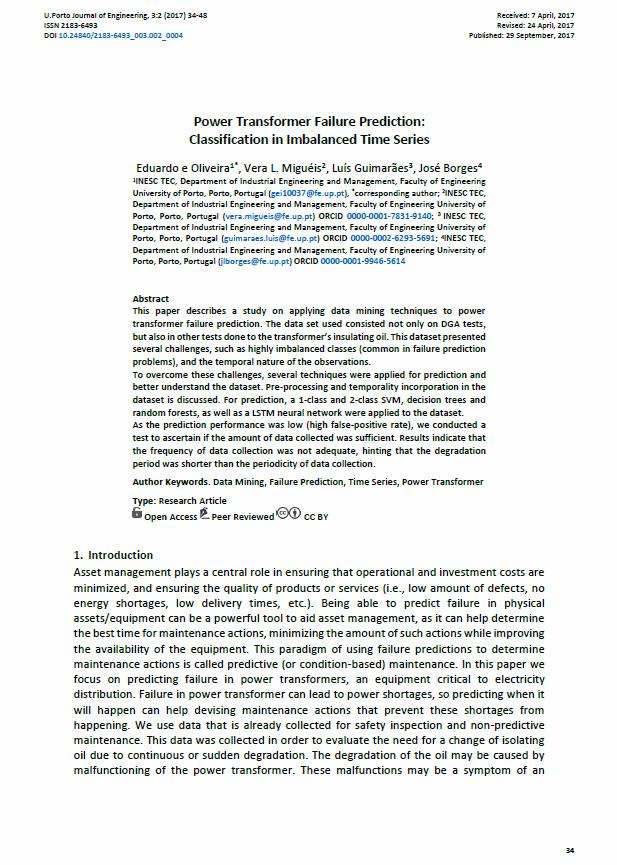Power Transformer Failure Prediction: Classification in Imbalanced Time Series
Main Article Content
Abstract
This paper describes a study on applying data mining techniques to power transformer failure prediction. The data set used consisted not only on DGA tests, but also in other tests done to the transformer’s insulating oil. This dataset presented several challenges, such as highly imbalanced classes (common in failure prediction problems), and the temporal nature of the observations.
To overcome these challenges, several techniques were applied for prediction and better understand the dataset. Pre-processing and temporality incorporation in the dataset is discussed. For prediction, a 1-class and 2-class SVM, decision trees and random forests, as well as a LSTM neural network were applied to the dataset.
As the prediction performance was low (high false-positive rate), we conducted a test to ascertain if the amount of data collected was sufficient. Results indicate that the frequency of data collection was not adequate, hinting that the degradation period was shorter than the periodicity of data collection.
Downloads
Article Details
Authors who publish with this journal agree to the following terms:
- Authors retain copyright and grant the journal right of first publication with the work simultaneously licensed under a Creative Commons Attribution License that allows others to share the work with an acknowledgement of the work's authorship and initial publication in this journal.
- Authors grant the journal the rights to provide the article in all forms and media so the article can be used on the latest technology even after publication and ensure its long-term preservation.
- Authors are able to enter into separate, additional contractual arrangements for the non-exclusive distribution of the journal's published version of the work (e.g., post it to an institutional repository or publish it in a book), with an acknowledgement of its initial publication in this journal.
- Authors are permitted and encouraged to post their work online (e.g., in institutional repositories or on their website) prior to and during the submission process, as it can lead to productive exchanges, as well as earlier and greater citation of published work (See The Effect of Open Access).

